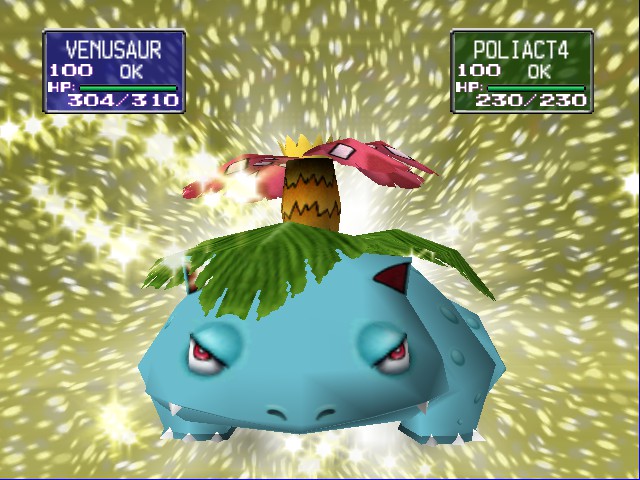Skills
The Skills of Pokemon
Pokemon Quick Navigation Links:
Character Breakdown: Pokemon
The Pokemon Workout
The Skills of Pokemon
The Elements of Pokemon
Okay, so first we’re going to do a quick, 1-2 sentence once-over of some physical pokemon skills, and then move on to teaching/learning and loyalty!
Pokemon Moves
Skull Bash/Headbutt: When you want to perform a strike with your head, you want to strike with the slope between your forehead and the top of your head(usually right where your hairline starts). You want to tense/reinforce the muscles of your shoulder and neck, so your back muscles take most of the brunt of the force as you drive forward with your upper back.
Mega Punch: The force of a strong punch actually comes from your legs, hips, and core muscles, rather than your arms. Stand with your feet shoulder with, knees bent, one foot in front, and then drive off of your back foot, pushing your heel into the ground, twisting at the hips, driving your upper body, and finally pushing all that force out through your arm, leading with your shoulder first.
Seismic Toss: Any time you’re attempting to throw a person, you should keep in mind several things. One, always get your center of gravity lower than your opponent. Two, stay upright, try not to bend over too much, or YOU’LL be off balance, too. Three, where the head goes, the body follows(this is why you try to stay upright, but more importantly, it applies to your opponent, too).
Teaching and Learning
Something I’ve learned over the years is how much the teaching/learning interaction affects acquiring new skills. There’s a reason I always recommend you find an actual martial arts school, rather than trying to learn through videos/books. There is no real substitute for having a real teacher, both with the experience they bring, and the ability to have that one-on-one interaction.
The other interesting thing, however, is the effect that teaching can have on the teacher. I’ve learned as much through teaching karate as I have through being taught by others. Part of this comes from the questions my students ask. They’re sometimes completely out of left field, highlighting questions about a technique or move that I would never have thought of. Of course, as a teacher, this is something I need to answer, which lets me put my critical thinking hat on and try to figure it out.
Next time you think you have a good grasp of a skill or ability, I encourage you to try to teach it someone else. This is a little more difficult than just using a TM on a pokemon! That said, you may find you gain a new mastery over this skill the more you teach it to others. Plus, teaching itself can be a very rewarding experience, and something everyone should try at least once.
Loyalty
So if your pokemon’s level is too high for your gym badges, what do they do? Ignore you, slough around, occasionally take a nap. Basically everything except what you want them to do. But how can we apply this idea to real life?
In order for people to be loyal to you, and listen to what you say, sometimes your “badge level” needs to be high enough. In real life, our badge level can be a combination of many things, including age, experience, size, build, the way we dress, and the way we carry ourselves. As such, it’s always good to make sure the things you have control of are always in top shape. That is, your physical fitness, your experience and knowledge in the subject you’re trying to lead other people in, the way you dress, and the way you carry yourself(see the Lara Croft confidence post, and maybe The Swagger of Duke Nukem as well).
Beyond this, there are some things you can do to work on people’s loyalty. One is to have them do simple requests for you. It sounds counter-intuitive, but having people do things for you actually instills a sense of loyalty and respect in them(as long as the task requested isn’t too demeaning). Another great thing to build loyalty and leadership is cooperative achievement. You should endeavor to begin projects with the people you’re trying to lead and build loyalty in. Work on it with them, in a leadership/managing role, but allow them to do it themselves, as well. Make sure you emphasize their positive role in the completed project. Having something they can look at and feel proud of helps to instill a sense of loyalty to the person that suggested and led the project.
There’s lots more writing out there on building loyalty and your own leadership skills. I definitely recommend reading “How to Win Friends and Influence People,” by Dale Carnegie. It’s an excellent book on general people skills, managing skills, and speaking skills, and still considered one of the best ever written, even over seventy years after its initial publication.
That’s it for the skills of Pokemon. Sorry this post didn’t go up yesterday, just had a hard time getting going. The Elements of Pokemon should be up either tonight or tomorrow. Until then, make sure to like the Facebook page, follow me on Twitter, go follow the Tumblr as well, and continue to be awesome.
Dan “DaRatmastah” Wallace





Pingback: Character Breakdown: Pokemon » Be a Game Character
Pingback: The Pokemon Workout | Be a Game Character
Pingback: The Elements of Pokemon | Be a Game Character